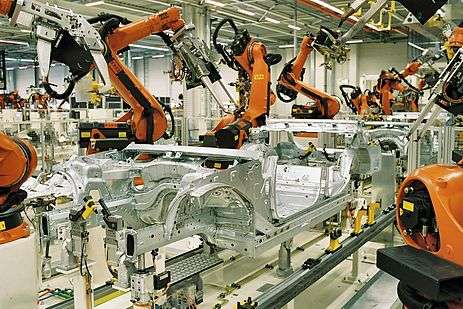High tech

High technology, often abbreviated to high tech (adjective forms high-technology, high-tech or hi-tech) is technology that is at the cutting edge: the most advanced technology available.[1] The opposite of high tech is low technology, referring to simple, often traditional or mechanical technology; for example, a slide rule is a low-tech calculating device.
The phrase was used in a 1958 The New York Times story advocating "atomic energy" for Europe: "... Western Europe, with its dense population and its high technology ...."[2] Robert Metz used the term in a financial column in 1969: "Arthur H. Collins of Collins Radio] controls a score of high technology patents in variety of fields."[3] and in a 1971 article used the abbreviated form, "high tech."[4]
A widely-used classification of high-technological manufacturing industries is provided by the OECD.[5] It is based on the intensity of research and development activities used in these industries within OECD coutries, resulting in four distinct categories.
See also
| Look up high tech in Wiktionary, the free dictionary. |
- Electronics
- Intermediate technology - sometimes used to mean technology between low and high technology
- Industrial design
- List of emerging technologies
- Innovation
References
- ↑ Cortright, Joseph; Mayer, Heike (January 2001). High Tech Specialization: A Comparison of High Technology Centers (PDF). Brookings Institution, Center on Urban & Metropolitan Policy.
- ↑ "Atomic Power for Europe", The New York Times, February 4, 1958, p. 17.
- ↑ Metz, Robert (1969). "Market Place: Collins Versus The Middle Man", The New York Times, April 24, 1969, p. 64.
- ↑ Metz, Robert (1971). "Market Place: So What Made E.D.S. Plunge?", The New York Times, November 11, 1971, p. 72.
- ↑ Hatzichronoglou, Thomas: "Revision of the High-Technology Sector and Product Classification", OECD Science, Technology and Industry Working Papers, No. 1997/02, OECD Publishing, Paris.